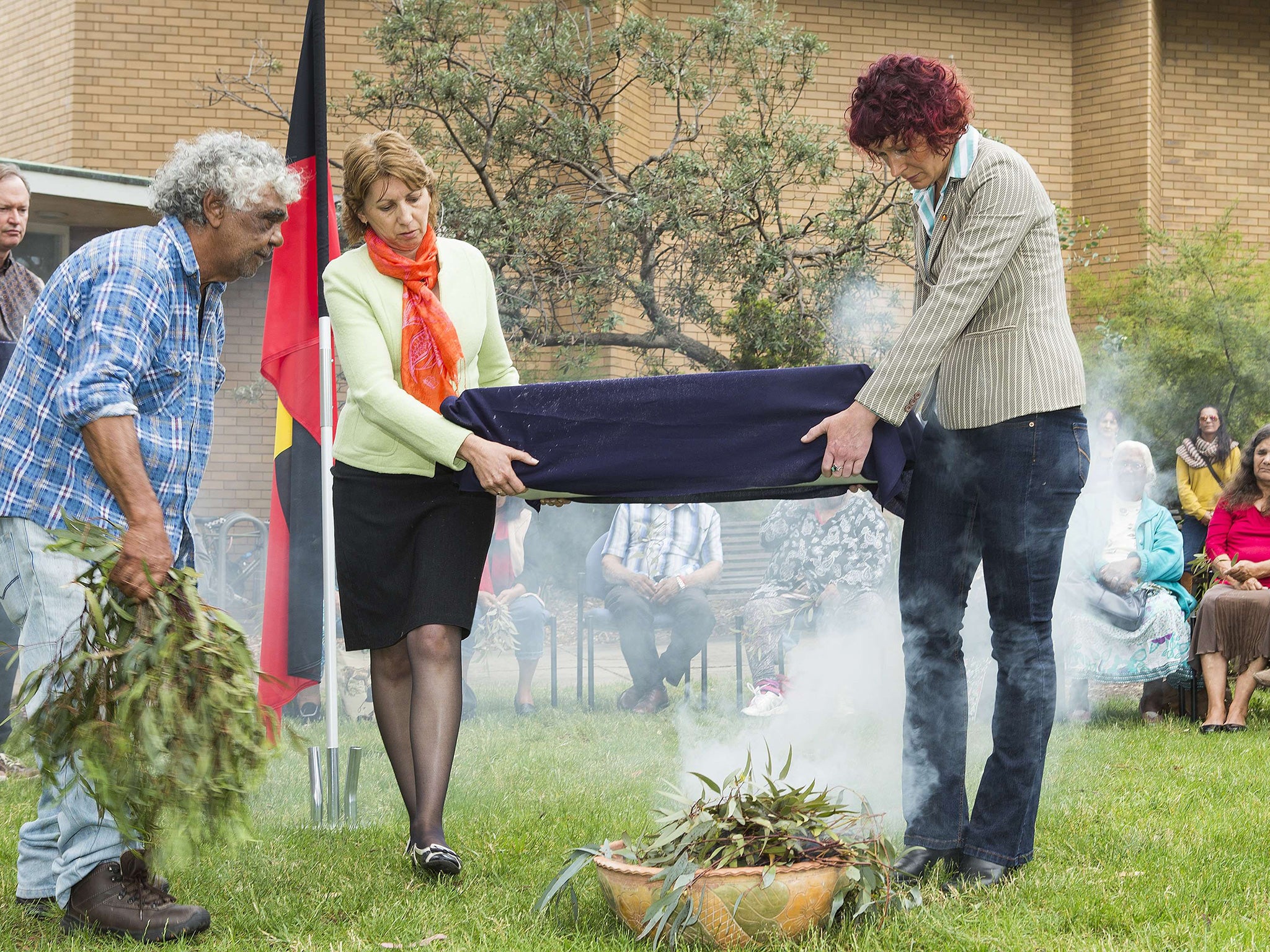'Mungo Man': Bones of Australia's 42,000-year-old man returned to Aboriginal tribes for burial
After years of negotiations, the man's bones have been handed back to Aboriginal tribal groups, to be returned to their original burial place

It was a discovery that rewrote Australian history and made headlines around the world: a 42,000-year-old skeleton found in a dry lake bed, which revealed that the continent had been occupied for twice as long as previously believed.
That was in 1974, and since then “Mungo Man” – he was found in an area of outback New South Wales known as Lake Mungo – has been kept in a cardboard box at the Australian National University (ANU) in Canberra.
That greatly distressed Aboriginal tribal groups from Lake Mungo, and today, after years of negotiations, the bones were finally handed back to the area’s traditional owners, to be returned to their original burial place.
“I think it’s terrible that they were taken in the first place,” one elder, Lottie Williams, told Australia’s ABC. “We weren’t even told ... Now we’re picking them up to take them back to where they belong.”
It was an ANU geologist, Jim Bowles, who discovered the skeleton in the arid, remote region. Now 85, Prof Bowles – who found a partially cremated female skeleton, dubbed “Mungo Lady”, in the same region seven years earlier – was present at yesterday’s ceremony in Canberra.
Until the male remains were uncovered, it was believed that Aboriginal people had been in Australia for 20,000 years. That was the initial age ascribed to Mungo Lady, a dramatic find in itself, which Prof Bowles described as like being confronted with “the very presence of humanity itself”.
His second discovery, though, was even more sensational, establishing that Aboriginal people are the world’s oldest culture. Mungo Man’s bones are the oldest found in Australia, and among the oldest found outside Africa.
Academics, though, long ago stopped poring over his remains, which were kept in the ANU’s archaeology department. Although the university says it looked after them well, the vice-chancellor, Ian Young, delivered a formal apology.
He said the ANU recognised that removing them from their burial site had “caused ongoing grief to your communities”, and it hoped that returning them could “in some way redress our past mistakes”.
The repatriation process has been complex and delicate, particularly given Aboriginal sensitivities about ancestral remains which in the past were seized - even dug up - and studied without permission. Some remain in collections overseas.
The situation is also complicated by erosion on Lake Mungo’s shores, where Mungo Man was buried, and the need to construct a special “keeping place” for him.
Mungo Lady is now believed to date from a similar era to Mungo Man – a time when some of Australia’s giant animals, or “megafauna”, still roamed the landscape. Artefacts found in the area date back 45,000 years. Mungo Man was about 50 when he died - a ripe old age for a hunter-gatherer. He had severe arthritis in his right elbow, probably from throwing spears.
“He’s done his job,” one elder, Mary Pappin, said. “It’s time for him to go home and rest now.”
Subscribe to Independent Premium to bookmark this article
Want to bookmark your favourite articles and stories to read or reference later? Start your Independent Premium subscription today.

Join our commenting forum
Join thought-provoking conversations, follow other Independent readers and see their replies